Quick Links
Organic search accounts for 53.3% of website traffic across all industries.
Beyond that, 23.6% of all eCommerce orders begin with an organic search query – and B2B and technology companies see 2x more revenue from organic traffic than any other type of traffic.
That’s only a fraction of the evidence out there supporting the effectiveness of attracting organic visitors through search engine optimization.
The kicker?
For traffic to be organic, it must come from unpaid sources. That means it won’t cost you a dime – and if you’ve optimized your website for search engines like Google – you can continue generating organic traffic well into the future.
Yet, you’ll need to develop a robust and informed SEO strategy to improve click-through rates and see more organic site traffic.
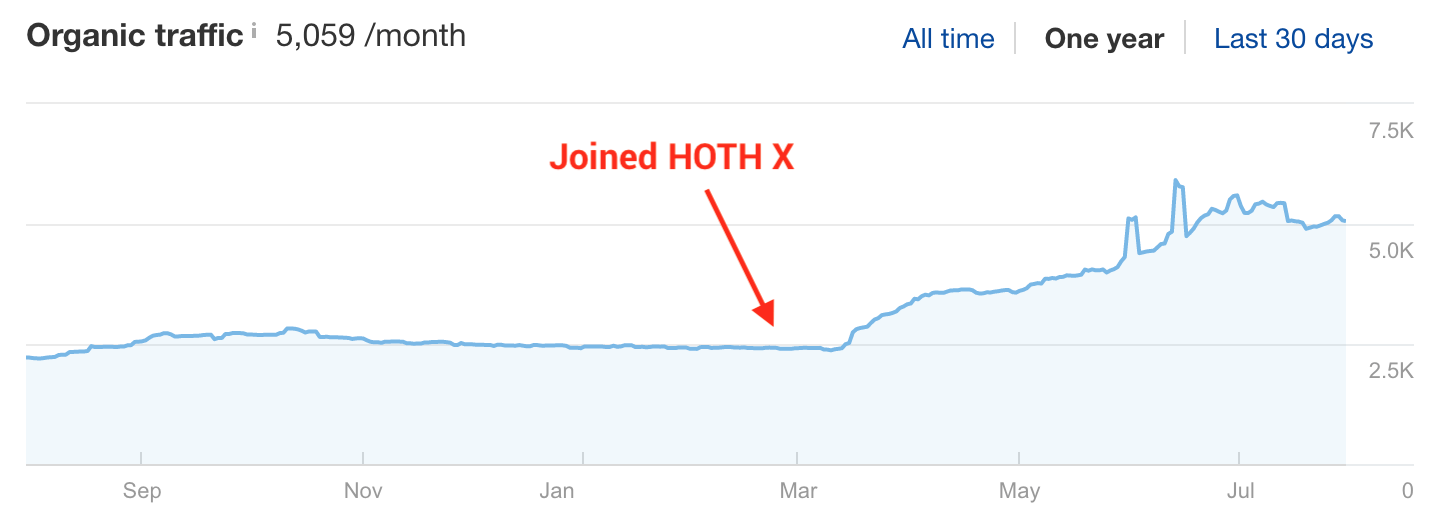
That’s why we’ve compiled some candid SEO tactics to help you grow your organic traffic. Read on to discover how to leverage the power of the organic search for your digital marketing strategy.
Why Is Organic Traffic Important?
If you’ve already invested heavily into PPC ads and social media traffic – you may wonder why it’s worth bothering with organic traffic.
Well, it turns out that organic traffic is the most important type of traffic you can generate for your website.
Why is that?
It’s because it’s a targeted form of traffic.
It all comes down to the basic philosophy of what search engines do: matching search queries with the most relevant content.
So when someone types a query in a search engine, they have a specific intent in mind. That intent could be to make a purchase, or it could be as simple as learning more information.
Whenever you match that intent with the content on your website, you’re far more likely to gain a follower, newsletter subscriber, or customer.
For example, let’s say that you’re interested in learning how to play the guitar. You start by searching ‘guitar basics’ on Google and then view the organic search results. The first result is a well-written blog with a video covering the basics of guitar playing.
You click on it, read the content, and subscribe to their newsletter to receive the latest lessons. Before you know it, you buy your first guitar and amp from their website.
That’s why organic traffic is so crucial for click-through rates and conversions. So if you aren’t currently using SEO to attract organic visitors, it’s never too late to start.
Check out our learning hub to learn more about SEO and organic traffic.
A sustainable, long-term approach
The great thing about an effective SEO strategy is that it keeps working for you well into the future.
For example, if you rank #1 for specific long-tail keywords, you’ll keep growing organic traffic from it until a competitor outdoes you. You’ll enjoy a compounding effect once your SEO efforts start seeing results.
Achieve thought leader status and build trust
One of the best things you can do for your business is to build customer loyalty.
Creating premium blog content that addresses pain points and answers questions is a great way to do that. That will lead prospects to view you as a thought leader in your field, which builds loyalty and trust.
It’s cost-effective
Generally speaking, you don’t have to spend any money to increase your organic traffic. Using some coveted on-page SEO tactics paired with content marketing will drive significant ROI without blowing your budget.
It produces highly qualified leads
Paid ads and traffic have their place, but the leads they produce aren’t always the best. Yet, leads that come from organic visitors are often highly qualified due to the targeted nature of SEO.
Encourages customer engagement
Since you’re targeting an audience through keywords, they’re far more likely to engage with your content. In other words, your organic visitors will be more enthusiastic about viewing your website, products, and services.
By rising through the organic search rankings, you’ll begin to attract targeted users from your niche, which is the ultimate goal of any digital marketing strategy.
Understanding the Different Traffic Sources
There are different types of traffic that your website will receive. It’s crucial to understand them all so you can understand insights from a web traffic analytics tool.
You see, tools such as Google Analytics and Google Search Console use algorithms and flow charts to classify traffic sources. So if you don’t know the difference between organic traffic and direct traffic, you’ll be a bit lost.
Here’s a breakdown of each traffic source that will show up in your metrics (barring organic traffic).
Direct traffic
Most consider direct traffic to be when someone types your URL directly into a browser (or clicks on a bookmarked link).
While that’s part of it, it’s not the entire picture.
A more accurate definition is that direct traffic refers to any visit that does not have a referring URL. Of course, that includes anyone typing your URL directly into a browser, as that would not have a referring URL. Yet, there are also other causes of direct traffic, including:
- Internal employees. Many platforms will count it as direct traffic if an internal employee visits your website. To avoid this, you must exempt all internal employee IPs from analytics reporting.
- Customer portals. If your existing customers log in to a portal, it may appear under direct traffic. While you should still view this data, it’s best to filter it out from direct traffic.
- Genuine direct traffic. These are all the visitors that typed your URL into their browser or clicked on a bookmarked link. That is the direct traffic that you want to leave alone.
- Client emails. Sometimes clients clicking on your website from an email won’t have any referring information – so they’ll show up as direct traffic. To see if this is the culprit, check to see if you saw a rise in direct traffic when the email was sent out.
- Mobile traffic. Analytical tools like GSC often struggle with classifying mobile visitors. More often than not, the visit will get listed under direct traffic.
- Clicks from software or applications. If you’re in a Zoom call with a client and they click on the link to your website – the app may not pass along the referring information. Thus, the visit will count as direct traffic.
- Secure to non-secure. If you visit a non-secure site from a secure one (HTTPS to HTTP), the referring information will not get passed on. As such, it will show up under direct traffic.
As you can see, the waters get muddied a bit when it comes to direct traffic. Refer to this list if you notice a spike in your direct traffic and aren’t sure why.
Paid search
This is the traffic you receive from PPC ads through platforms such as Google Ads. These ads show up at the top of the SERPs, even above the organic search results.
When done correctly, PPC campaigns can produce significant ROIs. You can use our free PPC ROI calculator to streamline your budget. Also, check out HOTH PPC services to learn more.
Email traffic
This category contains all the traffic you generate from your email marketing campaigns. You’ll want to tag these with an email parameter to ensure they show up correctly in your reporting.
Referral traffic
Whenever someone clicks on a link to your site (such as a backlink), it appears under referral traffic. This category encompasses all links that don’t come from search engines.
Social media traffic
Do you see a lot of visitors coming from Facebook, Twitter, or Instagram? If so, they’ll show up under this category in GSC and Google Analytics – which is where you’ll see all the traffic you generate from social media platforms.
Other
If the traffic doesn’t fit into any other category, it will appear under ‘Other.’
How to Grow Your Organic Traffic With SEO
Now that you know organic traffic is worth your time, here are some ways to generate more of it for your website.
Use keywords in the right places
The first step is to do thorough keyword research to discover the queries your audience is searching for the most. Don’t forget to use our free keyword research tool during this process.
It will help you identify keywords with high search volume and low competition. Those are the keywords you stand the most chance at ranking for – so go after those first.
Once you have your keywords, you need to know how to use them.
As a rule of thumb, you’ll want to include your target keywords in:
- Title tag
- Meta description
- 3 – 7 times organically in the body of the content
When a Googlebot crawls your website, some of the first things it will see are your title tag and meta description. That’s why you’ll want to include your target keyword in these crucial locations. Doing so can boost your rank and help you generate more organic visitors, especially if your web pages currently aren’t optimized.
Publish relevant content that answers questions and solves problems
Targeting users won’t matter much if you don’t have the high-quality content they need. It could be a blog post, YouTube video, or infographic – but you’ll need something for your users to consume once they click through to your page.
This is where it pays to really know your target audience – their wants, needs, and concerns.
That way, you’ll know which types of topics they’ll want to read about the most. That’s where extensive keyword research pays off, as well as doing general research on your niche.
It can be as simple as heading over to Reddit to see what your potential customers are chatting about at the moment. If your niche is health and wellness, join several online forums and engage with your audience. That will go a long way in helping you come up with not only blog posts and videos but also product ideas.
Always stay on the lookout for link-building opportunities
Link-building should be a core part of your SEO strategy if it isn’t already. While it’s common to pay for backlinks, there are also ways to generate them for free.
Is there another blog in your niche that gets a lot of clicks and interest?
If so, you can take advantage of that by reaching out to write a guest blog post for them. You can also offer them the opportunity to write a guest post on your blog as well.
That way, you both get the chance to backlink to your blogs and hopefully entice some new prospects with your post.
Another technique is the skyscraper method. It’s a bit more in-depth, but the results can be well worth it.
It’s where you do a Google search in your industry and then take a look at the top results (the skyscrapers). Find a post with a desirable backlink profile – and then outdo it.
How do you do that?
For one, you can buff the word count by going into more detail on the topic. If you can add a relevant video, that’s even better. Also, look for opportunities to add high-resolution images (as long as they relate to the subject) and infographics (preferably with statistics).
Once you’ve got a 10x better post, reach out to their backlinks. Politely let them know that you have a more current, in-depth post than the original and that you’d like them to link to your article instead. If your content is indeed better, they’re likely to make the switch.
Concluding Thoughts: Organic Traffic
Organic traffic is the most effective type of traffic you can generate, so it’s imperative not to ignore it. If you want to grow more organic traffic, you’ll need to bolster your SEO efforts.
You can do so by ranking for the right keywords, using them in the best spots, and creating fantastic content for your audience.
If you dream of higher conversions and a better CTR but don’t have the time, you can leverage our managed SEO services at HOTH X. Our experts will grow your organic traffic while you focus on running your business. Also, don’t hesitate to schedule a call with one of our consultants for elite-level advice and strategy.



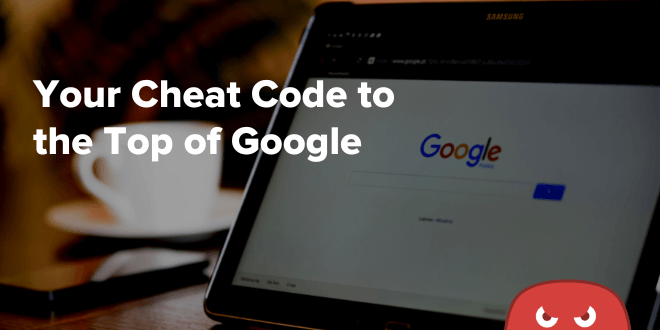

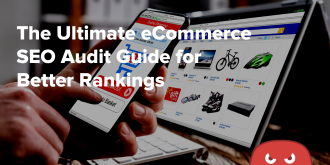
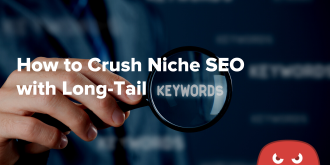
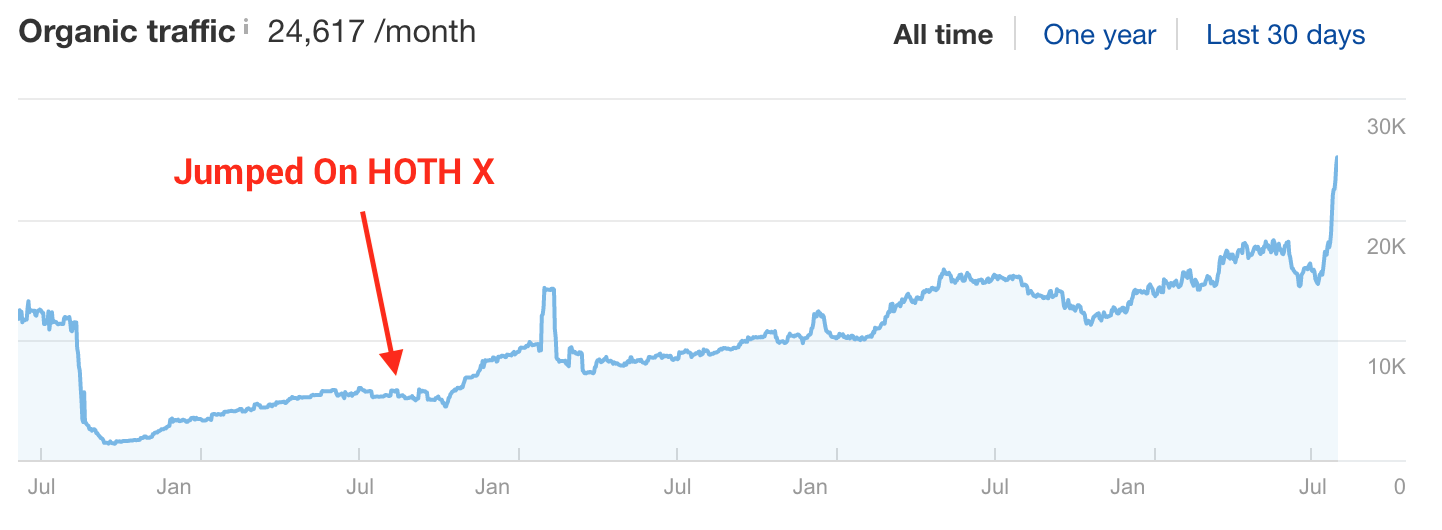




Thank you for the insightful advice.